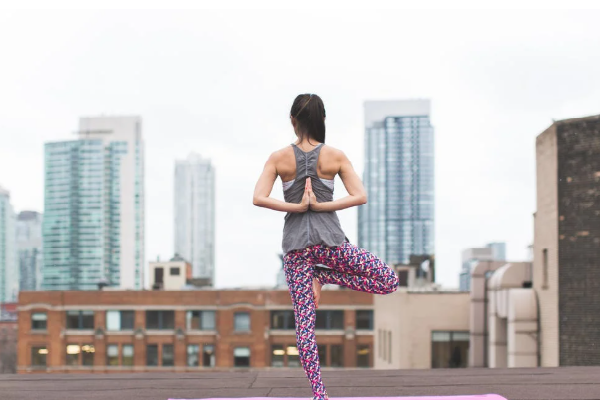Are planning to start a fitness routine?. This advanced era everybody wants to be healthy, maintain a perfect body, to attain this the best way is to proper exercise and diet. But in this, the routine or the time table is different from people to people.
Check this point when you plan your fitness routine;
Assess your fitness level
You probably have some idea of how fit you are. But assessing and recording baseline fitness scores can give you benchmarks against which to measure your progress. To assess your aerobic and muscular fitness, flexibility, and body composition, consider recording:
- Your pulse rate before and immediately after walking 1 mile (1.6 kilometers)
- How long it takes to walk 1 mile, or how long it takes to run 1.5 miles (2.41 kilometers)
- How many standard or modified pushups you can do at a time
- How far you can reach forward while seated on the floor with your legs in front of you
- Your waist circumference, just above your hip bones
- Your body mass index
Design your fitness program
It’s easy to say that you’ll exercise every day. But you’ll need a plan. As you design your fitness program, keep these points in mind:
Create a balanced routine: For most healthy adults, the Department of Health and Human Services recommends getting at least 150 minutes of moderate aerobic activity or 75 minutes of vigorous aerobic activity a week, or a combination of moderate and vigorous activity. The guidelines suggest that you spread out this exercise during the course of a week. Greater amounts of exercise will provide even greater health benefits.
But even small amounts of physical activity are helpful. Being active for short periods of time throughout the day can add up to provide health benefits.
Start low and progress slowly: If you’re just beginning to exercise, start cautiously and progress slowly. If you have an injury or a medical condition, consult your doctor or an exercise therapist for help designing a fitness program that gradually improves your range of motion, strength and endurance.
Plan to include different activities: Different activities (cross-training) can keep exercise boredom at bay. Cross-training using low-impact forms of activity, such as biking or water exercise, also reduces your chances of injuring or overusing one specific muscle or joint. Plan to alternate among activities that emphasize different parts of your body, such as walking, swimming and strength training.
Try high-interval intensity training: In high-interval intensity training, you perform short bursts of high-intensity activity separated by recovery periods of low-intensity activity.
Allow time for recovery: Many people start exercising with frenzied zeal — working out too long or too intensely — and give up when their muscles and joints become sore or injured. Plan time between sessions for your body to rest and recover.
Assemble your equipment
You’ll probably start with athletic shoes. Be sure to pick shoes designed for the activity you have in mind. For example, running shoes are lighter in weight than cross-training shoes, which are more supportive.
If you’re planning to invest in exercise equipment, choose something that’s practical, enjoyable and easy to use. You may want to try out certain types of equipment at a fitness center before investing in your own equipment.
You might consider using fitness apps for smart devices or other activity tracking devices, such as ones that can track your distance, track calories burned or monitor your heart rate.
Get started

Now you’re ready for action. As you begin your fitness program, keep these tips in mind:
Start slowly and build up gradually: Give yourself plenty of time to warm up and cool down with easy walking or gentle stretching. Then speed up to a pace you can continue for five to 10 minutes without getting overly tired. As your stamina improves, gradually increase the amount of time you exercise. Work your way up to 30 to 60 minutes of exercise most days of the week.
Break things up if you have to: You don’t have to do all your exercise at one time, so you can weave in activity throughout your day. Shorter but more-frequent sessions have aerobic benefits, too. Exercising in short sessions a few times a day may fit into your schedule better than a single 30-minute session. Any amount of activity is better than none at all.
Be creative: Maybe your workout routine includes various activities, such as walking, bicycling or rowing. But don’t stop there. Take a weekend hike with your family or spend an evening ballroom dancing. Find activities you enjoy to add to your fitness routine.
Be flexible: If you’re not feeling good, give yourself permission to take a day or two off.
Monitor your progress
Retake your personal fitness assessment six weeks after you start your program and then again every few months. You may notice that you need to increase the amount of time you exercise in order to continue improving. Or you may be pleasantly surprised to find that you’re exercising just the right amount to meet your fitness goals.
If you lose motivation, set new goals or try a new activity. Exercising with a friend or taking a class at a fitness center may help, too.
There is no single type of exercise that can take care of all your needs. In fact, to get the most benefits from your routine, you want a mix of activities during the course of a week. Otherwise, it’s like a diet consisting only of fruit—healthful as far as it goes, but lacking a lot of the nutrients you’ll find in other foods, such as fish, vegetables, nuts, and whole grains.





